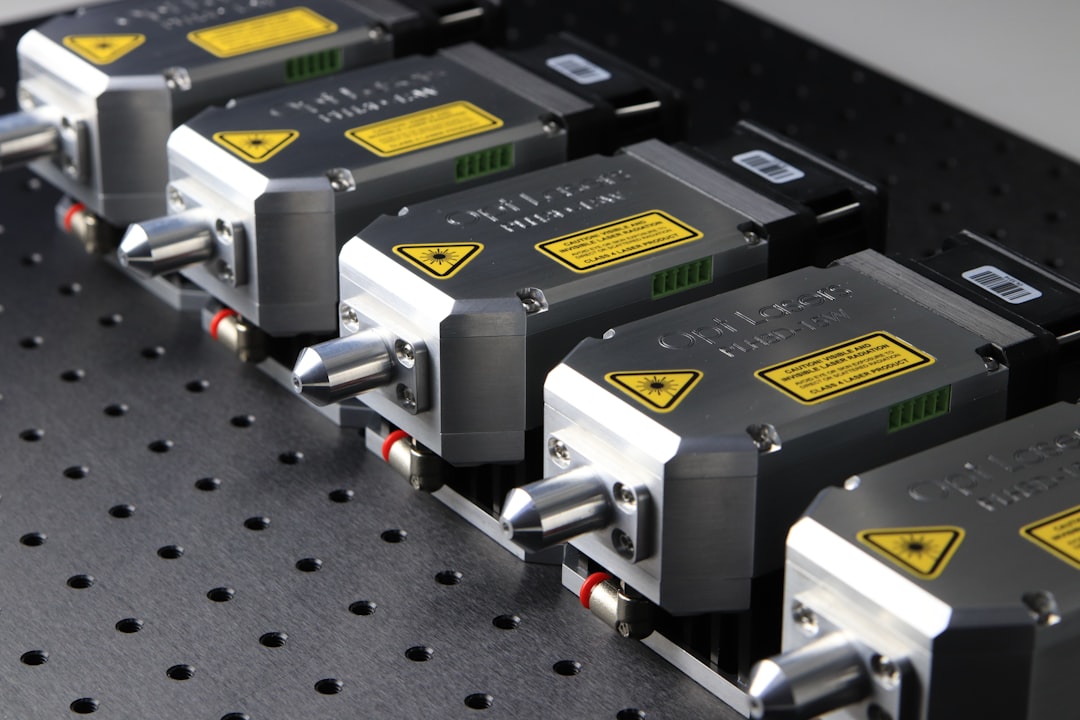A laser hair removal technician is a professional who specializes in using laser technology to remove unwanted body hair. They work in a variety of settings, including medical spas, dermatology clinics, and specialized laser hair removal centers. The primary responsibility of a laser hair removal technician is to safely and effectively remove hair from clients using laser equipment. This involves assessing the client’s skin and hair type, determining the appropriate laser settings, and performing the hair removal procedure. Additionally, laser hair removal technicians must educate clients about the procedure, provide pre- and post-treatment care instructions, and maintain accurate client records. It is important for laser hair removal technicians to have excellent communication skills, attention to detail, and a strong understanding of skin anatomy and physiology.
Laser hair removal technicians also play a crucial role in ensuring the safety and comfort of their clients during the procedure. They must adhere to strict safety protocols and guidelines to minimize the risk of adverse reactions or complications. This includes conducting thorough client consultations to assess their medical history and any potential contraindications for the procedure. Laser hair removal technicians must also be knowledgeable about different types of laser equipment and how to operate them safely. Overall, the role of a laser hair removal technician requires a combination of technical expertise, client care, and a commitment to upholding the highest standards of safety and professionalism.
Key Takeaways
- Laser hair removal technicians use specialized equipment to remove unwanted hair from clients’ bodies
- Education and training in a related field, such as esthetics or cosmetology, is necessary to become a laser hair removal technician
- Certification and licensure may be required depending on the state or country in which you plan to work
- Hands-on experience is crucial for mastering the techniques and skills needed for successful laser hair removal
- Different types of laser equipment are used for hair removal, and it’s important to understand their differences and how to use them safely
- Safety and precautions, such as protecting the client’s skin and eyes, are essential for preventing injury during laser hair removal treatments
- Advancing your career may involve pursuing additional certifications, gaining experience with different types of clients, or even opening your own laser hair removal business
Completing the Necessary Education and Training
Becoming a laser hair removal technician typically requires completing a formal education and training program. Many vocational schools, community colleges, and specialized training centers offer programs specifically designed for aspiring laser hair removal technicians. These programs often cover topics such as skin anatomy, laser physics, hair growth cycles, and the principles of laser hair removal. Additionally, students may receive hands-on training in using different types of laser equipment and performing hair removal procedures on simulated clients. It is important for aspiring laser hair removal technicians to choose a program that is accredited by a recognized accrediting body, as this ensures that the education and training meet industry standards.
In addition to formal education, some states may have specific requirements for licensure or certification as a laser hair removal technician. This may include completing a certain number of training hours or passing a written exam to demonstrate proficiency in laser hair removal procedures. Aspiring laser hair removal technicians should research the requirements in their state and ensure that they meet all necessary criteria before pursuing a career in this field. Overall, completing the necessary education and training is essential for developing the knowledge and skills needed to excel as a laser hair removal technician.
Obtaining Certification and Licensure
Obtaining certification and licensure is an important step for laser hair removal technicians to demonstrate their competence and professionalism in the field. While certification requirements may vary by state, many professional organizations offer certification programs for laser hair removal technicians. These programs typically require candidates to complete a certain number of training hours, pass a written exam, and demonstrate proficiency in performing laser hair removal procedures. Additionally, some states may require licensure for practicing as a laser hair removal technician, which may involve meeting specific education and training requirements and passing a state-administered exam.
Certification and licensure not only validate the skills and knowledge of laser hair removal technicians but also provide reassurance to clients that they are receiving treatment from a qualified professional. Additionally, maintaining certification often requires ongoing education and training to stay current with the latest advancements in laser technology and best practices in the field. By obtaining certification and licensure, laser hair removal technicians can enhance their credibility, expand their career opportunities, and contribute to the overall professionalism of the industry.
Gaining Hands-On Experience
| Hands-On Experience Activity | Number of Participants | Duration |
|---|---|---|
| Internship | 50 | 3 months |
| Volunteering | 100 | 6 months |
| Apprenticeship | 30 | 1 year |
Gaining hands-on experience is an essential part of becoming a proficient laser hair removal technician. Many education and training programs include opportunities for students to practice performing laser hair removal procedures under the supervision of experienced professionals. This hands-on experience allows aspiring technicians to develop their skills in using different types of laser equipment, assessing client needs, and ensuring the safety and effectiveness of the procedure. Additionally, gaining hands-on experience provides valuable exposure to working with diverse clients and addressing various skin and hair types.
After completing formal education and training, new laser hair removal technicians may seek employment opportunities in medical spas, dermatology clinics, or other settings where laser hair removal services are offered. Working alongside experienced professionals allows them to further refine their skills, gain insight into best practices, and learn about the business aspects of providing laser hair removal services. Over time, gaining hands-on experience can lead to increased confidence, proficiency, and the ability to handle a wide range of client needs with professionalism and expertise.
Learning about Different Types of Laser Equipment
As technology continues to advance, there are various types of laser equipment used for hair removal procedures. Laser hair removal technicians must stay informed about the different types of equipment available on the market, as well as their specific features, benefits, and limitations. This knowledge allows technicians to select the most appropriate equipment for each client’s unique needs and ensure optimal results. Additionally, understanding the differences between various types of laser equipment enables technicians to stay current with industry trends and advancements in technology.
Some common types of laser equipment used for hair removal include diode lasers, alexandrite lasers, Nd:YAG lasers, and intense pulsed light (IPL) devices. Each type of equipment has its own set of characteristics, such as wavelength, pulse duration, and spot size, which can affect its suitability for different skin types and hair colors. Laser hair removal technicians must be knowledgeable about how these factors impact treatment outcomes and be able to make informed decisions about which equipment to use for each client. By learning about different types of laser equipment, technicians can enhance their ability to deliver safe, effective, and customized treatments for their clients.
Understanding Safety and Precautions

Safety is paramount in the field of laser hair removal, and technicians must have a thorough understanding of safety protocols and precautions to minimize the risk of adverse reactions or complications during treatment. This includes conducting comprehensive client consultations to assess their medical history, skin type, and any potential contraindications for the procedure. Laser hair removal technicians must also ensure that clients wear appropriate eye protection during treatment to prevent damage to their eyes from the intense light emitted by the laser equipment.
In addition to client safety, technicians must also take measures to protect themselves from potential hazards associated with operating laser equipment. This may include wearing protective eyewear, gloves, and other personal protective equipment (PPE) as recommended by industry guidelines. Furthermore, technicians should be knowledgeable about emergency procedures in case of accidental injury or adverse reactions during treatment. By understanding safety protocols and precautions, laser hair removal technicians can create a secure environment for both themselves and their clients while delivering high-quality care.
Advancing Your Career as a Laser Hair Removal Technician
As experienced professionals in the field of laser hair removal, there are various opportunities for advancement and career growth. Some technicians may choose to specialize in specific areas such as treating darker skin types or working with advanced laser technologies. Others may pursue additional certifications or training in related fields such as medical aesthetics or cosmetic dermatology to expand their scope of practice. Advancing your career as a laser hair removal technician may also involve taking on leadership roles within a practice or pursuing opportunities to train and mentor new technicians.
Furthermore, staying informed about the latest advancements in laser technology and treatment techniques is essential for career advancement in this field. Attending industry conferences, workshops, and continuing education courses can provide valuable insights into emerging trends and best practices. Additionally, networking with other professionals in the field can lead to new opportunities for collaboration or career advancement. By continuously seeking out opportunities for growth and development, laser hair removal technicians can expand their expertise, enhance their professional reputation, and contribute to the ongoing advancement of the industry.
In conclusion, becoming a successful laser hair removal technician requires a combination of education, training, certification, hands-on experience, and ongoing professional development. By understanding the role of a laser hair removal technician and committing to excellence in client care and safety, professionals in this field can make a meaningful impact on the lives of their clients while building a rewarding career in the beauty and aesthetics industry.
If you’re considering a career as a laser hair removal technician, you may also be interested in learning more about the experiences of individuals who have undergone laser hair removal treatments. Check out this insightful article featuring reviews of laser hair removal in Thousand Oaks to gain valuable insights into the process and its outcomes. Hearing firsthand accounts can provide you with a better understanding of the impact and benefits of laser hair removal, which can be beneficial as you embark on your journey to becoming a skilled technician.
FAQs
What is a laser hair removal technician?
A laser hair removal technician is a trained professional who uses laser technology to remove unwanted body hair. They are responsible for assessing the client’s skin and hair type, determining the appropriate laser treatment, and performing the procedure.
What are the steps to become a laser hair removal technician?
To become a laser hair removal technician, one must complete a high school diploma or equivalent, enroll in a state-approved laser hair removal training program, obtain a state license or certification, and gain hands-on experience through internships or on-the-job training.
What are the educational requirements to become a laser hair removal technician?
Educational requirements to become a laser hair removal technician vary by state, but typically include completing a state-approved laser hair removal training program. These programs cover topics such as laser safety, skin anatomy, hair growth cycles, and laser technology.
What skills are necessary to become a laser hair removal technician?
Skills necessary to become a laser hair removal technician include attention to detail, good hand-eye coordination, strong communication skills, the ability to work well with diverse clients, and a thorough understanding of laser technology and skin anatomy.
What is the job outlook for laser hair removal technicians?
The job outlook for laser hair removal technicians is positive, with an expected growth in demand for cosmetic procedures. As more people seek laser hair removal treatments, the need for trained technicians is likely to increase.






